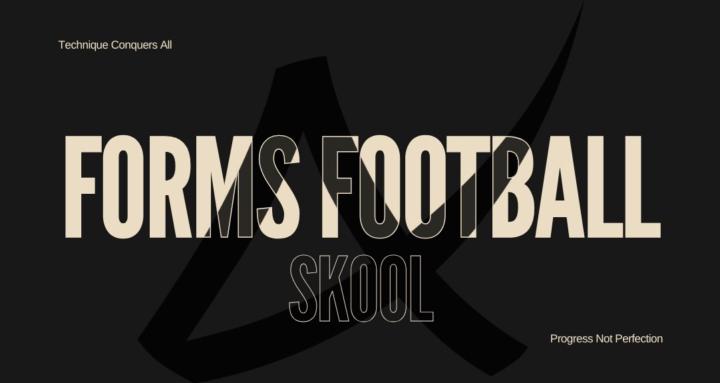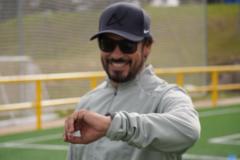
Write something
Pinned
Welcome to Forms Football
This is the official online home of the Forms Academy philosophy. I created this community as a space to share my research, whitepapers, and training frameworks that go deeper than what most parents and coaches ever see. This is where I’ll publish new ideas, post video discussions, and refine the methodology that drives Forms Academy and Alpha Superior Madrid. What to expect here: - Original whitepapers and technical frameworks - Video breakdowns on training methodology and pedagogy - Honest answers to parent questions about development and pathways - A community committed to advancing how football is taught and understood Why free now? We are opening the first 100 spots at no cost. Once the community reaches 100 members, it will convert to a paid program for everyone. Your first step: Introduce yourself in the comments below. Tell us about your player — age, position, and the biggest developmental challenge you want to solve. Welcome. Let’s set a new standard for football development. -Ron What is the age of your player? Unsure, as you navigate through the material, you should be able to answer soon.
Poll
3 members have voted
3
0
Pinned
White paper: Why Most Youth Footballers Plateau at Age 12
Community Feed Post: Executive Summary Most young players hit a developmental wall around age 12. It looks like talent is drying up, but in reality, it’s a failure of methodology. Three problems cause the plateau: 1. Missed sensitive periods (ages 6–12 when brains are most primed for skill learning) - skills like coordination and ball mastery aren’t fully built before the brain hardens. 2. Tactical overload too early — players are asked to memorize systems their brains aren’t ready for, killing creativity. 3. Subjective evaluation — growth is judged by opinion instead of science, leaving players and parents guessing. At Forms Academy, we solve this with the FORMAX 5x5 model, which aligns training with brain science and gives clear, measurable progression. Our players don’t plateau at 12. They accelerate. The full module with expanded text, PDF, and research references is now live in the Classroom under Whitepapers & Research → Why Most Youth Footballers Plateau at Age 12. Discussion prompt: - Parents: At what age did you notice your child’s development slow or plateau? - Coaches: Where have you seen premature tactical overload hurt growth? - Which FORMAX domain do you think your player is strongest in? Where is there room to grow?
2
0
Why Training Groups at Forms Academy Sometimes Mix
At Forms Academy, we place children in training environments designed for growth. This sometimes means boys and girls train together, or younger players train with older ones. At other times, an older player may train with younger peers. These decisions are not about fairness in the short term but about what is best for each child’s long-term development. Boys and Girls in the Same Session Boys and girls build football skills through the same brain and body processes. Training together gives both groups valuable benefits. Girls often face faster speeds of play, which sharpens their decision-making. Boys encounter different movement and rhythm patterns, which force them to adapt. This variety helps all players become more complete and resilient. Younger Players Training with Older Younger players grow when they are pushed just beyond what feels comfortable. Training with older players increases the speed of decision-making and helps them adjust to higher physical and cognitive demands. It also allows older players to lead and refine their technique against younger, faster opponents. Older Players Training with Younger Sometimes, an older player needs to train with a younger group. This can happen when they need to rebuild confidence, recover from injury, or correct technical gaps that would otherwise be hidden in faster environments. Slowing the game down allows them to reset their foundation before moving forward again. It is not a punishment but a smart developmental step. Training Up is Not the Same as Playing Up Parents often ask why their child cannot simply play up in games if training up is helpful. The answer is that training is controlled and guided by coaches. We can raise or lower the level of challenge, stop, or adjust as needed. Games cannot be adjusted. If a player is not ready for the speed and physicality, they may get fewer touches, lose confidence, or develop poor habits. Training is where we create stretch. Games are where children consolidate what they have learned.
2
0
🆕 New whitepaper added to classroom! 🎓✏️
Check out the discussion here or go straight to the Classrom
1
0
Whitepaper: Dual-Task Overload and Neural Adaptation in Youth Football Development
Community Feed Post: Executive Summary At first glance, the dribble–tennis ball wall exercise looks messy. Players freeze, mis-sequence, under-hit passes, or even throw the tennis ball instead of striking the football. But these short-circuits aren’t failures — they are proof the brain is learning under strain. Here’s what the science shows: 1. Short-term: Mistakes sharpen error awareness, accelerate weak-foot calibration, and teach players to split attention while staying composed. 2. Long-term: Repetition builds automaticity, bilateral dexterity, anticipation, and resilience under pressure. Players stop panicking in chaos because their nervous systems have been rewired to thrive in it. 3. Why it matters: Traditional drills look clean in practice but fail in matches. This exercise embraces chaos and error, ensuring skills transfer to real competition where attention is always divided. At Forms Academy, we use this drill to demonstrate our methodology: football is not about rehearsed neatness but about training the brain to perform under the realities of the game. The full module, with expanded analysis, research references, and parent-friendly PDF, is now live in the Classroom under Whitepapers & Research → Training the Brain, Not Just the Feet. Discussion prompt: - Parents: How do you react when your child looks awkward or makes repeated mistakes in training? - Coaches: Are you comfortable letting players look messy in practice if it produces resilience in games? - Where in matches have you seen hesitation, weak passes, or freezes that mirror what happens in this drill?
3
0
1-9 of 9
powered by

skool.com/forms-football-skool-9380
The official community of Forms Academy. Where parents & coaches learn the science, systems, & philosophy that raise elite youth footballers (soccer).
Suggested communities
Powered by
